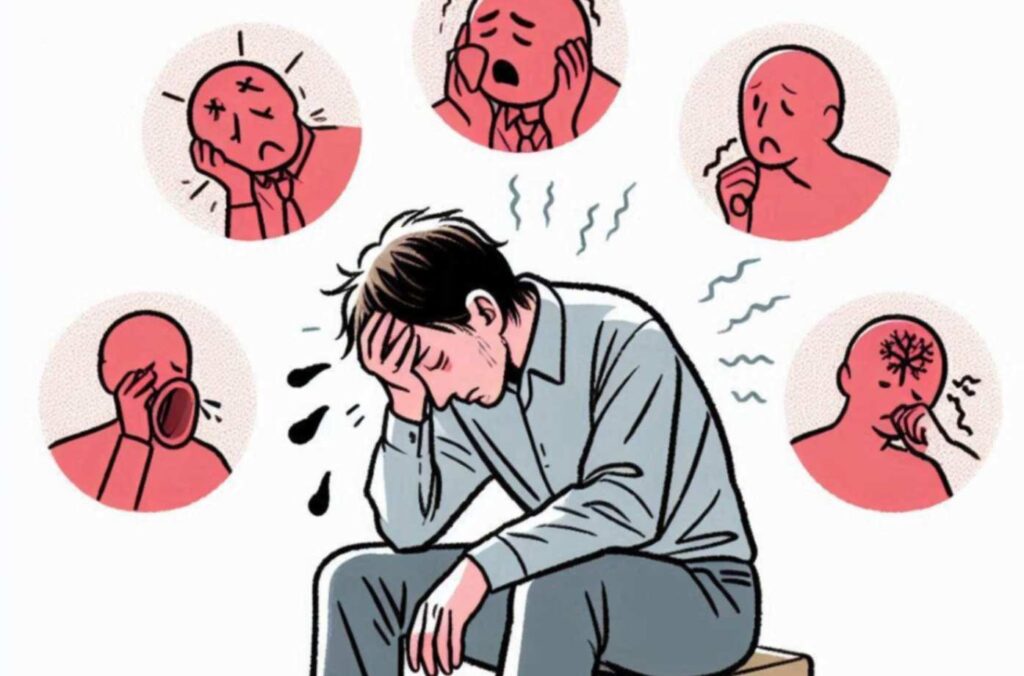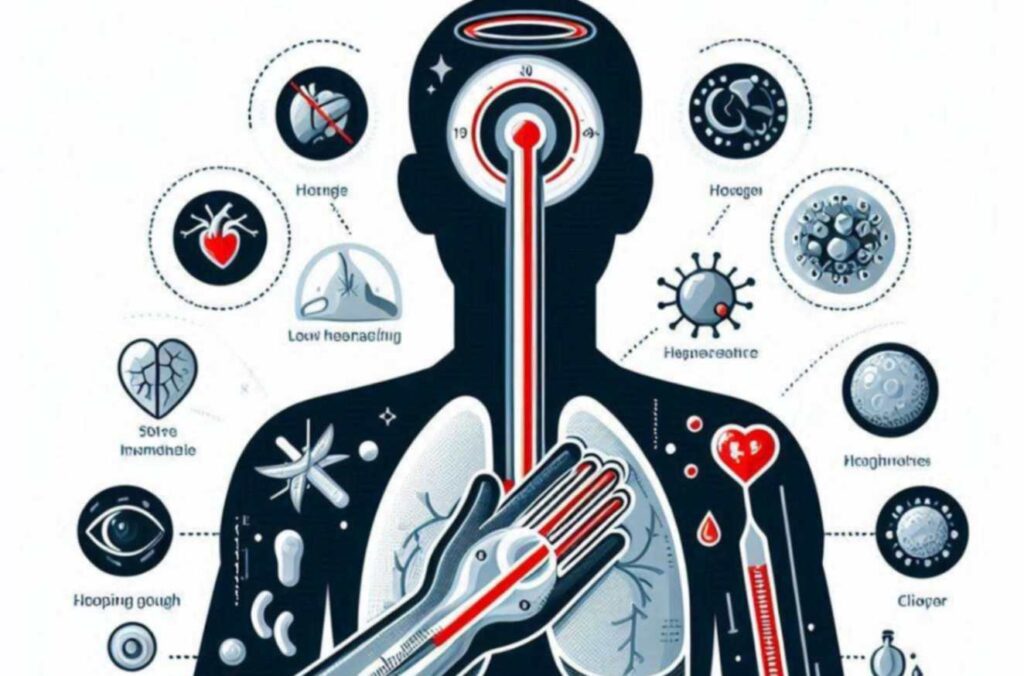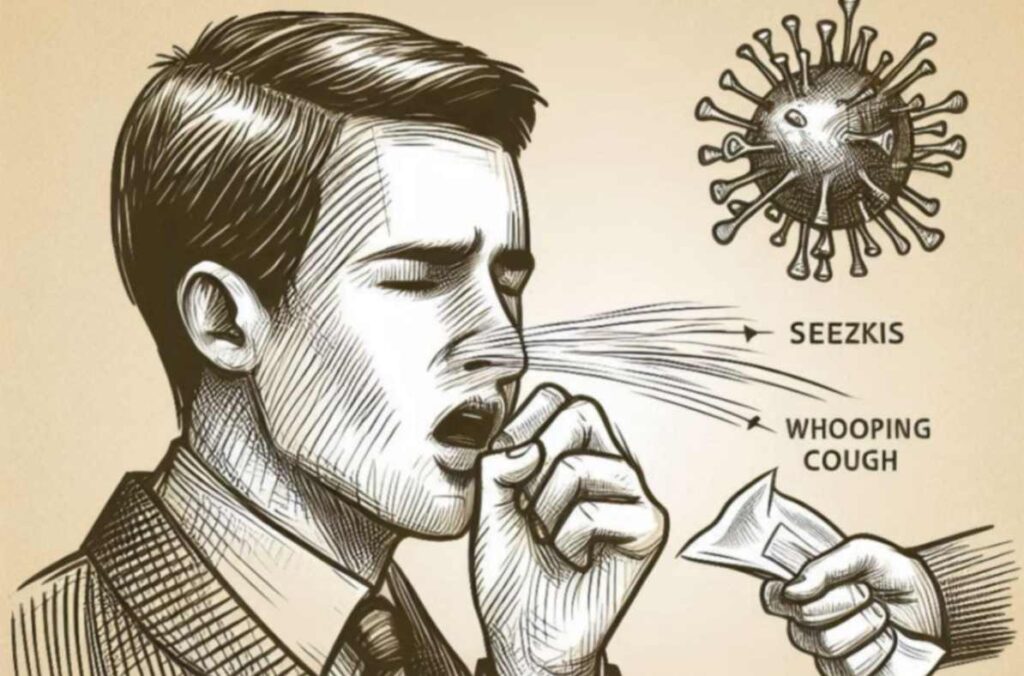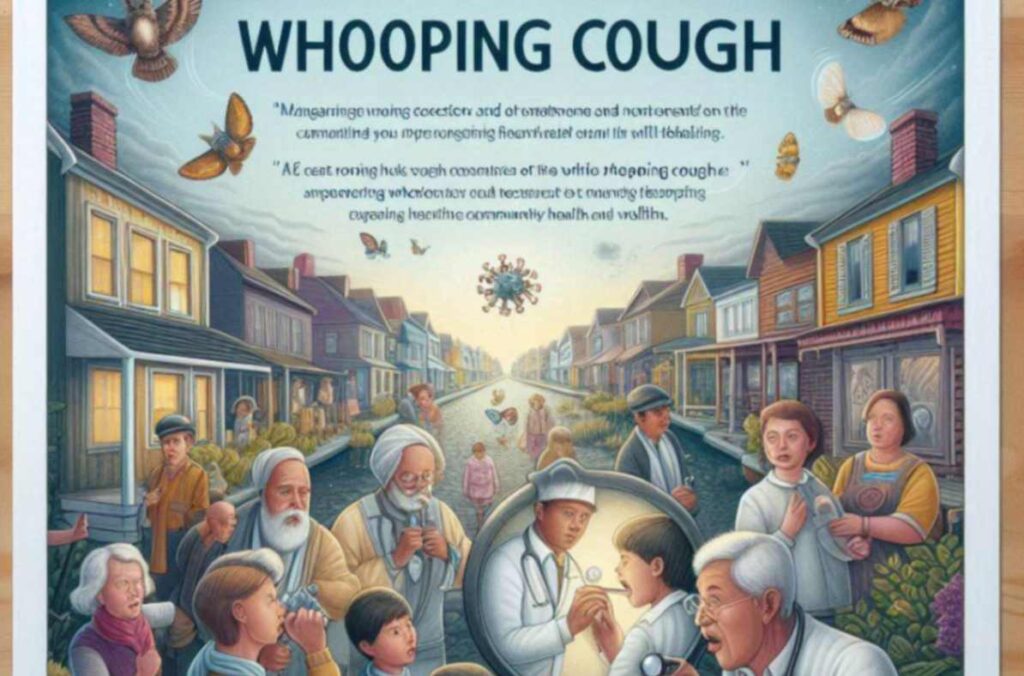Whooping cough, or pertussis, is a highly contagious respiratory infection. For effective treatment and to stop the spread, early discovery is essential. Early detection of the symptoms might have a big impact. This article outlines five whooping cough early symptoms that are frequently confused with the common cold or other minor illnesses. Being aware of these signs will enable you to seek medical assistance as soon as possible. Continue reading to find out the main warning indicators of this dangerous illness.
1: Runny Nose:
A runny nose is often the first symptom of whooping cough. This symptom is usually mistaken for the common cold. A runny nose is usually a clear, watery discharge, similar to what one might experience during an early cold or allergy episode.
Duration and Progression:
A whooping cough typically causes runny nose that lasts one to two weeks. It could first look indistinguishable from the nasal congestion associated with other mild respiratory conditions. But unlike a typical cold, whooping cough is characterized by runny nose that does not go away on its own and can worsen as the illness goes on.

Significance:
The presence of a runny nose can be easily overlooked or dismissed as trivial. Many people may not associate a runny nose with whooping cough, especially in its early stages. This misinterpretation can delay seeking medical advice or intervention.
It’s critical to identify runny nose as one of the potential early signs of whooping cough. It frequently coexists with other minor symptoms like sneezing and a low-grade temperature, which helps medical professionals distinguish it from the typical cold. In order to start treatment on time and stop the illness from spreading to other people, especially vulnerable groups like the elderly and newborns, early recognition of these symptoms is essential.
2: Mild cough:
In the early stages of whooping cough, a mild cough often appears first. This cough is usually subtle and can be mistaken for a common cold. It begins as an intermittent, dry cough without mucus, making it less noticeable.
Patterns and features:
An initial mild cough follows a sporadic pattern. Unlike the persistent cough in the later stages, this initial cough may occur sporadically throughout the day. It is usually dry and nonproductive, meaning it does not produce mucus.
- Frequency: The cough may gradually increase in frequency.
- Voice: May have a repetitive, “hollow” sound.
- Severity: It is usually less severe but can change rapidly.

Evolution:
In one to two weeks, a mild cough turns into a more severe cough. As the bacteria (Bordetella pertussis) proliferates, the body’s response is intensified. The cough becomes more persistent and occurs in paroxysms—sudden, uncontrollable bursts of coughing. These fits can be severe enough to cause vomiting, exhaustion, and a characteristic “whooping” voice.
Impact on Diagnosis:
Mild cough can lead to misdiagnosis or delayed diagnosis. Medical professionals could initially diagnose it as bronchitis or the common cold. Early whooping cough detection is crucial, particularly in cases where a person is unvaccinated or at high risk, such as newborns and young children.
3: Low-grade fever:
Another early sign of whooping cough is a low-grade fever. The small increase in body temperature that causes this kind of fever often occurs between 100.4°F (38°C) and 102.2°F (39°C). Since it’s usually not severe, there might not be any first discomfort or anxiety.
Comparison with other diseases:
Since low-grade fevers are frequently seen in a variety of respiratory conditions, they might be easily missed or misinterpreted. When someone has whooping cough, runny nose and a slight cough are common symptoms in addition to the fever. A low-grade fever might not be immediately hazardous, in contrast to the high fever found in more serious diseases.
- Cold or flu: High fever, more pronounced body aches, and fatigue.
- Bronchitis: Similar to a low-grade fever but with a more productive cough.
- Allergy: Usually no fever.
Impact on assessment:
The presence of a low-grade fever can serve as an important clue in the diagnosis of whooping cough, especially when considered with other early symptoms. However, it can also lead to misdiagnosis if not properly contextualized. Health care providers may initially think of more common illnesses such as a cold or mild flu, especially if the fever is not accompanied by severe symptoms.

Recognition and misinterpretation:
It’s critical to identify a low-grade fever as a potential whooping cough early symptom. Due to its moderate nature, people—including medical professionals—may disregard it as unimportant. This symptom should raise the possibility of whooping cough, especially in those who are unvaccinated or have recently come into close contact with an infected person, when it is accompanied with a persistent runny nose and slight cough.
4: Fatigue:
One prominent early whooping cough symptom is weariness, which is defined as abnormally high levels of exhaustion and low energy. This symptom frequently makes people feel weak and lethargic, which can make it difficult for them to carry out everyday tasks. This general feeling of restlessness can make even ordinary tasks exhausting.
Onset and duration:
Fatigue usually appears in the early stages of whooping cough and can persist for several weeks. It usually begins subtly, with people feeling more tired than usual for no apparent reason. Over time, this fatigue can become severe, making it difficult for individuals to maintain their normal routines.
Early stage:
- Fatigue is present but mild and can easily be attributed to other factors such as stress or lack of sleep.
Progression:
- As the infection progresses, fatigue becomes more pronounced and persistent.
Recognition and Misinterpretation:
Many times, fatigue is misdiagnosed or disregarded as a whooping cough early symptom. Individuals may put their weariness down to common causes like excessive work, sleep deprivation, or other minor illnesses. This misinterpretation can delay medical advice and proper diagnosis.
Common misconceptions:
Fatigue is often mistaken for exhaustion due to everyday stress or other minor ailments.
Context Importance:
When initial symptoms such as runny nose, mild cough, and low-grade fever are accompanied by fatigue, it should raise the suspicion of whooping cough.
Importance:
It’s critical to identify fatigue as a whooping cough early symptom in order to provide prompt treatment. In addition to other symptoms, fatigue can be used to differentiate whooping cough from less serious conditions. Prompt therapy after early detection can lessen the disease’s severity and stop it from spreading.
Role of the Health Care Provider:
Clinicians should consider fatigue as a possible symptom of whooping cough, especially in patients with other associated symptoms or a known infectious cause.
Patient Awareness:
Individuals should be aware that persistent fatigue, when combined with other early symptoms, warrants medical attention.
5: Sneezing:
Sneezing is a typical early whooping cough symptom that is frequently disregarded. Typically, it manifests as mild, frequent sneezing that is akin to that of allergies or the common cold. Sneezing is the body’s normal reaction to nasal passage discomfort and the first sign of Bordetella pertussis infection.
Frequency and Pattern:
Sneezing occurs more frequently in whooping cough than in other minor illnesses. The pattern can be continuous or intermittent, and although it may seem harmless, it is often accompanied by other early symptoms such as a runny nose and a mild cough.
- Early stage: Frequent sneezing is more common in the early stages of infection.
- Accompanying symptoms: Frequent runny nose, mild cough and low-grade fever.
Comparison with other causes:
Sneezing caused by whooping cough can be difficult to distinguish from sneezing caused by a cold, allergies, or other respiratory conditions.

Colds:
- Sneezing is usually accompanied by a sore throat, congestion and sometimes a high fever.
Allergies:
- Sneezing is often accompanied by itchy eyes, runny nose and is usually seasonal or triggered by specific allergens.
Role in disease transmission:
One of the main ways that whooping cough is spread is by sneezing. Particularly in close-contact settings like homes, schools, and workplaces, every sneeze can release droplets containing Bordetella pertussis germs into the air, promoting the infection’s spread to others.
Spread of infection:
- Sneezes can spread bacteria-laden droplets several feet, increasing the risk of infecting others.
Precautions:
- Covering sneezes with a tissue or elbow and practicing good hand hygiene are important to prevent its spread.
Significance:
Recognizing sneezing as an early symptom of whooping cough is important for several reasons:
Early detection:
Frequent sneezing, especially when combined with other symptoms such as a runny nose and mild cough, may prompt early medical consultation.
Public health:
Recognizing sneezing as a symptom can lead to early isolation and treatment, reducing the risk of spreading infection to vulnerable populations, such as infants and those with weakened immune systems.
Sneezing is an often underestimated early symptom of whooping cough. Understanding its frequency and role in disease transmission is critical for early diagnosis and prevention. By recognizing sneezing along with other early symptoms, individuals and healthcare providers can take timely action to treat and control infection, improve patient outcomes, and protect public health.
Read More About 6 -Vital Asthma Attack Symptoms.
Conclusion:
In conclusion, recognizing the early symptoms of whooping cough is paramount for timely diagnosis and intervention. Runny nose, light cough, low-grade fever, weariness, and sneezing are examples of symptoms that could initially seem unimportant but could be signs of a potentially dangerous infection. Comprehending the importance of these symptoms, particularly in combination, facilitates timely medical evaluation and suitable intervention.

Early detection not only improves individual outcomes by reducing disease severity, but also plays an important role in preventing the spread of whooping cough in communities. Therefore, awareness of these early symptoms is important for both individuals and healthcare providers to ensure effective management and control of the disease.
FAQs:
Is it possible to avoid whooping cough?
As it turns out, the best protection against whooping cough is vaccination. To prevent pertussis, infants and early children receive the DTaP vaccine on a regular basis.
Is whooping cough contagious?
Yes, whooping cough is highly contagious, especially in the early stages when symptoms resemble the common cold. It spreads through respiratory droplets when an infected person coughs or sneezes.
Related:
Which of these is not Important for Positive Mental Health?
Mental health is the foundation of a happy and balanced life. It is influenced by…
What is Commonly Misdiagnosed as Pink Eye?
Pink eye, or conjunctivitis, is a common eye problem. It causes redness, itching and sometimes…



1 thought on “5 symptoms of whooping cough”